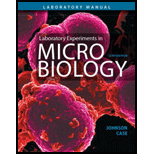
Concept explainers
Write the
To write:
The chemical reaction catalyzed by nitrate reductase
Introduction:
Catalysis is the process that raises the rate of a chemical reaction by adding an element known as a catalyst. Catalyst is not utilized in the reaction. The catalyst usually forms a temporary intermediate product.
Chemical reactions occur rapidly in the presence (or existence) of a catalyst because the catalyst gives an alternative reaction pathway with lower activation energy than the non-catalyzed mechanism.
In the presence (or existence) of a catalyst, less free energy is needed to reach the transition state, but the total free energy to the products from the reactants does not change. As compared to the non-catalyzed reaction, catalyzed reactions have lower activation energy.
Explanation of Solution
Nitrate reductase is molybdenoenzymes. It is responsible for catalyzing the nitrate assimilation (rate-limiting step). It is not only accountable for catalyzing, but also increases the production of amino acids in tea leaves.
Nitrogen assimilation forms organic nitrogen compounds (like amino acids) from inorganic nitrogen compounds existing in the atmosphere. The first step of this process is the decrease of nitrate to nitrite in the cytosol. It is catalyzed by nitrate reductase.
The chemical reaction catalyzed by nitrate reductase is nitrogen assimilation.
Want to see more full solutions like this?
Chapter 27 Solutions
Pearson eText for Laboratory Experiments in Microbiology -- Instant Access (Pearson+)
- Not part of a graded assignment, from a past midtermarrow_forwardNoggin mutation: The mouse, one of the phenotypic consequences of Noggin mutationis mispatterning of the spinal cord, in the posterior region of the mouse embryo, suchthat in the hindlimb region the more ventral fates are lost, and the dorsal Pax3 domain isexpanded. (this experiment is not in the lectures).a. Hypothesis for why: What would be your hypothesis for why the ventral fatesare lost and dorsal fates expanded? Include in your answer the words notochord,BMP, SHH and either (or both of) surface ectoderm or lateral plate mesodermarrow_forwardNot part of a graded assignment, from a past midtermarrow_forward
- Explain in a flowcharts organazing the words down below: genetics Chromosomes Inheritance DNA & Genes Mutations Proteinsarrow_forwardplease helparrow_forwardWhat does the heavy dark line along collecting duct tell us about water reabsorption in this individual at this time? What does the heavy dark line along collecting duct tell us about ADH secretion in this individual at this time?arrow_forward
 Principles Of Radiographic Imaging: An Art And A ...Health & NutritionISBN:9781337711067Author:Richard R. Carlton, Arlene M. Adler, Vesna BalacPublisher:Cengage Learning
Principles Of Radiographic Imaging: An Art And A ...Health & NutritionISBN:9781337711067Author:Richard R. Carlton, Arlene M. Adler, Vesna BalacPublisher:Cengage Learning Biology (MindTap Course List)BiologyISBN:9781337392938Author:Eldra Solomon, Charles Martin, Diana W. Martin, Linda R. BergPublisher:Cengage Learning
Biology (MindTap Course List)BiologyISBN:9781337392938Author:Eldra Solomon, Charles Martin, Diana W. Martin, Linda R. BergPublisher:Cengage Learning





